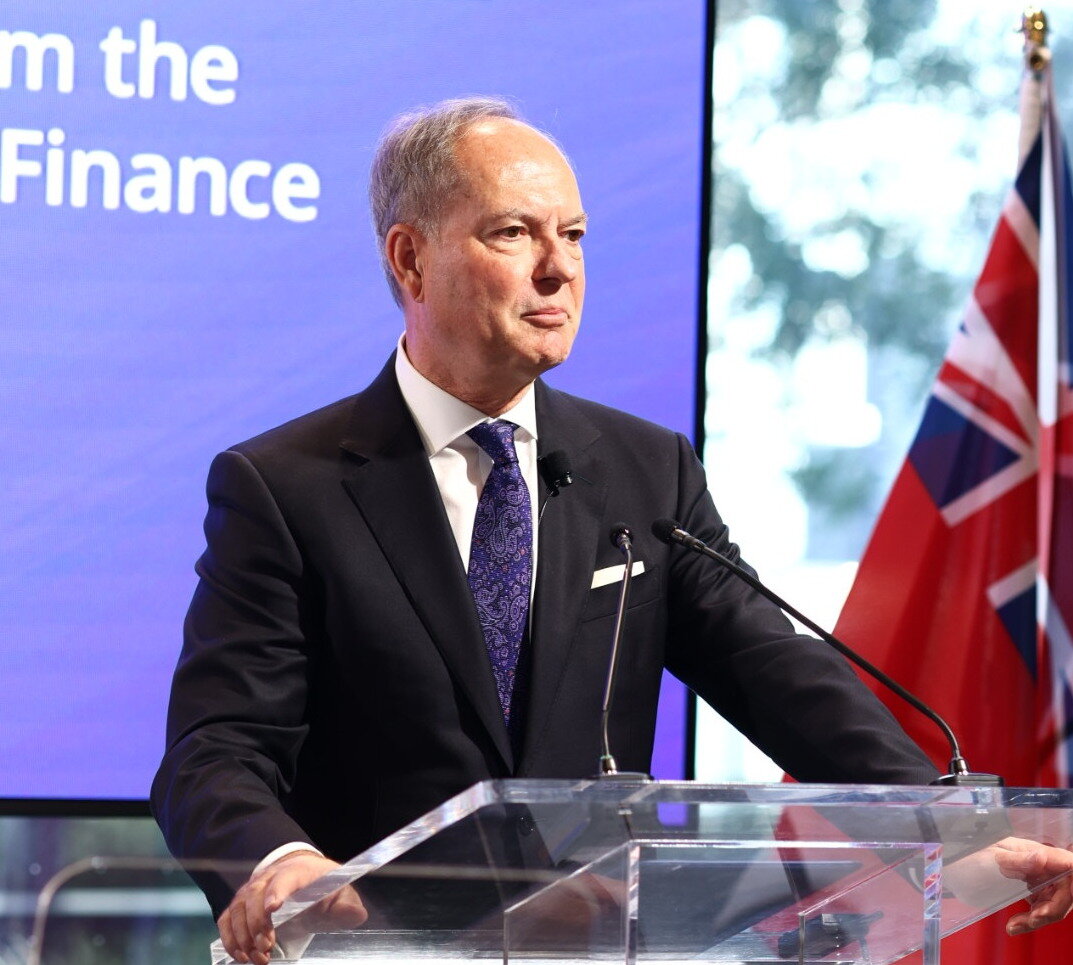Ontario’s economy hinges on how quickly it can adapt to a world that’s no longer playing by the same rules.
At our recent event, held just weeks before the province’s Fall Economic Statement, Ontario’s Minister of Finance, Peter Bethlenfalvy, made the case for building Ontario’s future by building at home. He described an economy facing two defining tests: the rise of global protectionism abroad and the need for greater productivity at home. The Minister argued the answer lies in using Ontario’s own capacity to compete.
That means buying Canadian, building Ontario, and investing in the infrastructure that underpins growth. The Minister pointed to projects that double the power grid, expand transit, and modernize supply chains as examples of what he called “good debt” — borrowing with purpose to strengthen competitiveness. Fiscal discipline, he said, is not about restraint but about investing in the assets that make Ontario productive and self-reliant.
“The world’s economic rules have changed,” Minister Bethlenfalvy said. “We can’t live in an old free trade world — we didn’t create this new one, but we have to compete in it.”
As our President and CEO, Giles Gherson, reflected, that mission now falls to productivity: to build the capacity to make, move, and power more of what the world needs — right here at home.
Ontario’s new industrial strategy is taking shape
The Minister made clear that Ontario must play offense in a protectionist world. Competing now means backing its own industries, securing domestic supply chains, and ensuring that when global partners invest, they find capacity, and confidence, in Ontario.
Building capacity through infrastructure and energy
Doubling the province’s power grid, expanding transit, and constructing the first Small Modular Reactor mark a generational build-out. The Minister says these projects aren’t just spending, they’re productivity investments that determine whether Ontario can move energy, people, and goods at the speed of the modern economy.
Fiscal strength as a foundation, not a constraint
Minister Bethlenfalvy pointed to Ontario’s balance sheet saying it is among the most stable in North America . He calls it a platform for long-term investment. With borrowing costs at historic lows and debt focused on assets, fiscal discipline is enabling growth, not limiting it.
Capital is waiting for clarity and speed
Ontario’s challenge is not a shortage of funds but a shortage of certainty. Pension funds and financial institutions have the capital; what they need are faster approvals and clearer rules. The province’s next advantage will come from how quickly it can turn investment into action.
$1.2 trillion
Size of Ontario's economy — the largest sub-national economy in Canada.
5.5 ¢
Borrowing cost per dollar of revenue — Ontario’s lowest since 1985.
30 years
Term of roughly one-third of Ontario’s outstanding bonds, locking in low rates for generational projects.
2 million +
Population increase since 2018, driving demand for housing, energy, and infrastructure.
$3 billion
Investment commited through Indigenous Opportunities Fund, advancing equitable participation in energy and resource projects linked to the province's growth plan.

“We have to ask ourselves the question: do we want a steel industry in this country? Do we want to have an auto sector, nuclear energy, construction? It all starts with steel. If the answer is yes — and I think it is — then we have to get dead serious. Buy Ontario. Buy Canada. When we build here, we should be using Ontario and Canadian suppliers. That’s how we keep our workers employed, our industries strong, and our economy resilient. Because if we’re not building here, someone else is — and they’re not waiting.”
— The Honourable Peter Bethlenfalvy, Minister of Finance of Ontario
“The Minister is right — the challenge is not abstract. Productivity is how Ontario wins. It’s how we move from reacting to leading. Every policy, every investment, has to be judged by whether it builds capacity: the ability to make, move, and power more of what the world needs, right here at home. That’s the path to competitiveness, and that’s what will define Ontario’s next decade.”
— Giles Gherson, President & CEO, Toronto Region Board of Trade
Thank you to our partners for helping to make this event a success.

